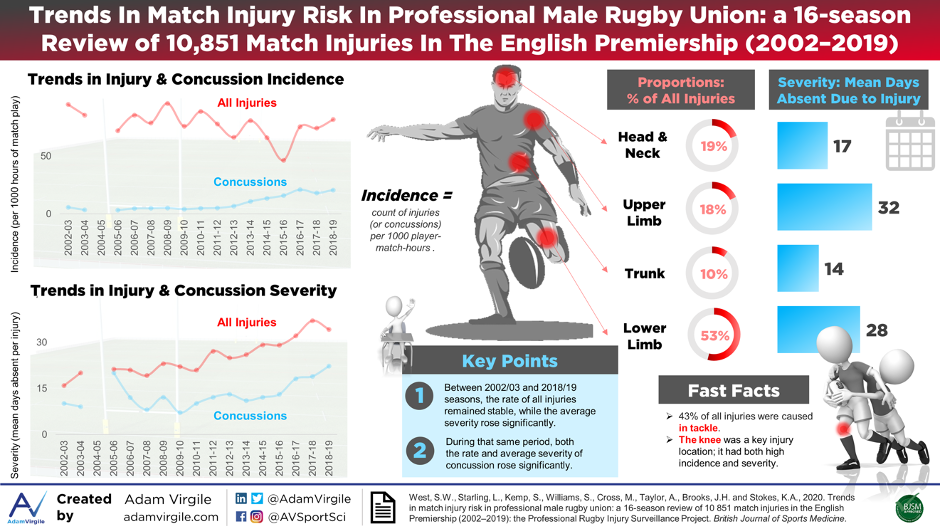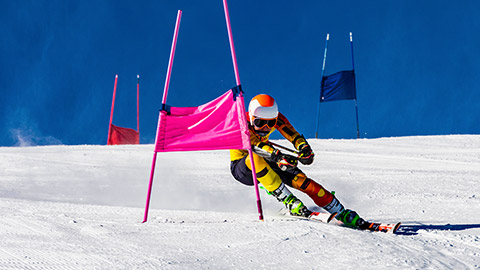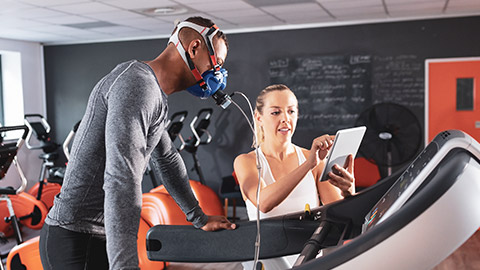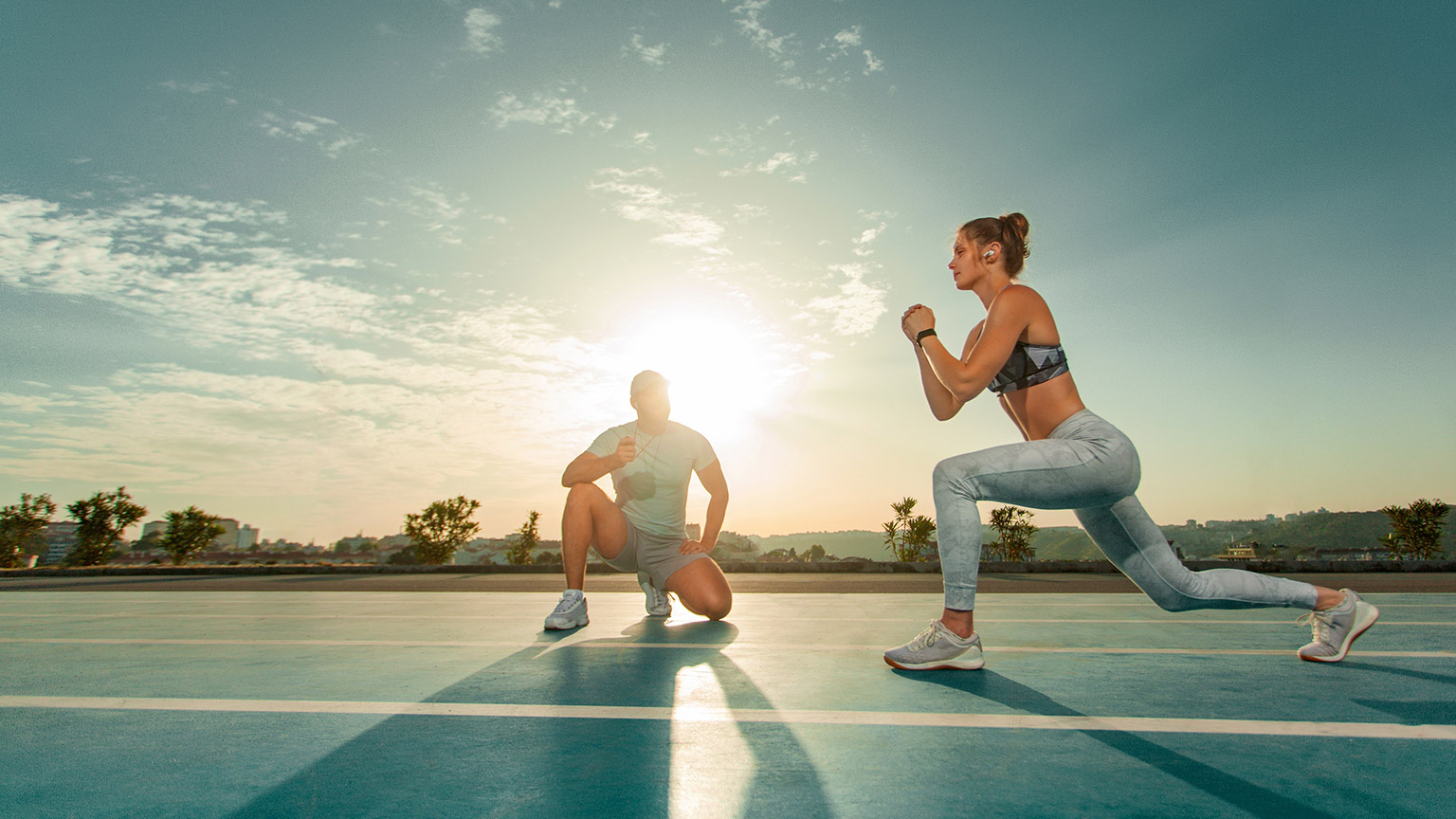A needs analysis is the process of determining what qualities are necessary for the athlete, the sport, or a combination of both.
Doing an in-depth needs analysis allows a fitness professional to identify what physical qualities are most important for their athlete to perform well in their sport. It also provides an injury analysis of the sport and helps to tailor training towards preventing such injuries.
On top of all this, analysing the physical profile of the athlete helps the coach understand the strength and weaknesses of their athlete, and highlights where the majority of the training time should be spent.
A comprehensive needs analysis will cover both the needs of the sport and the needs of the athlete.
Why should you do a needs analysis?
It has been consistently proven that well-designed physical training programmes can reduce injury rates and improve athletic performance. As a result, it is the primary responsibility of the fitness professional to ensure both these training objectives are achieved.
The only way to ensure a training programme will be successful is to conduct an extensive needs analysis on the sport and the individual.
Format of a needs analysis
A needs analysis is often conducted in 3 parts:
- Section 1 - Sport-orientated needs analysis
- Section 2 - Profiling the athlete (athlete-orientated analysis)
- Section 3 - Comparative analysis
Identifying the demands of the sport is often done first, as this allows the fitness professional to identify what qualities the athlete needs to possess to perform well in that sport.
A sport-orientated needs analysis will look at the specific demands of that sport. For example:
- The duration of the sport – are there any stoppages/rest times?
- Location – is it land-based or water-based?
- The structure – competition schedule, individual or team-based sport?
- Competition level (i.e. professional or amateur)
- Average distances covered
- Positional requirements – speed, strength, power, agility, kicking, throwing
- Equipment – bats, racquets, sticks, protective padding
Injuries analysis
Consider common injuries in that sport and position, injury frequency, average time-loss from particular injuries, time of year injuries, surfaces, and predisposing factors (e.g. previous injury). This stage requires research.
Here's a typical example of injury analysis:

Study Summary by Adam Virgile, 2020, © Adam Virgile.
Biomechanical (kinematic and kinetic) analysis
What are the important biomechanical factors influencing the sport?
- Kinematics of the sport – sprinting, jogging, walking, shuffling, lateral shuffling, sitting, twisting, jumping (one-leg/ two-leg), throwing, balancing, lunging, and tackling.
- Kinetics of the sport – all force-time, power-time, and velocity-time characteristics (e.g. peak force, rate of force development, eccentric rate of force development, impulse, ground contact time, torque, peak power output, average power output, peak velocity, time to peak velocity, and average velocity).
Here's an example of a biomechanical analysis of alpine skiing performance:

Important factors influencing alpine skiing performance
Turning technique:
- carving
- skidding
Kinematics:
- racing time
- trajectory and speed
Kinetics:
- ground reaction forces
- air drag and ski-snow friction
- energy dissipation
Ski equipment:
- skis
- lift plates, bindings and boots
- poles
- racing suits, protective devices and wearable technologies
Tactics:
- external conditions
- abilities
Biomechanical determinants of the performance of Olympic alpine skiers by Matej Supej and Hans-Christer Holmberg, 2019, © Matej Supej and Hans-Christer Holmberg
The following table is an example of biomechanical analysis for basketball:
| Activity | Speed of movement (km/h) | Total distance covered (m) | Percentage of time spent in activity (%) |
|---|---|---|---|
| Standing | 0 | 0 | 32 |
| Walking | <6 | 1720 | 31 |
| Jogging | 6.1-12.0 | 1870 | 5.6 |
| Running | 12.1-18.0 | 928 | 4.5 |
| Sprinting | >24 | 763 | 2.8 |
| Striding | 18.1-24.0 | 406 | 2.4 |
| Low intensity shuffling | <6 | 606 | 8.5 |
| Moderate intensity shuffling | 6.1-9.0 | 691 | 6.5 |
| High intensity shuffling | >9.1 | 169 | 3.1 |
| Sideways running | >12 | 218 | 1.9 |
| Jumping | 0 | 0 | 1.7 |
Other types of sport needs analysis
Other analyses can include aerobic analysis (e.g. average heart rate, maximum heart rate, VO2 max, average VO2, and total distance) and anaerobic analysis (e.g. lactate threshold, anaerobic capacity, anaerobic power, the total number of sprints, sprints per minute, high-intensity running, total jumps, the total number of direction changes.)
The aim of all this information is to dissect the sport into manageable segments so that the strength and conditioning coach or sports scientist can prescribe a more accurate, and hopefully more beneficial training programme (Walker, 2016).
Potential issues in gathering data
Issues with conducting a sports-orientated needs analysis can arise due to a lack of information on a particular sport. This is often due to limited research data and can make performing a sports-orientated needs analysis harder. Data may be in research-based journals and either inaccessible or trickier to obtain. Often you can access abstracts that provide summaries and figures/tables for free. You may also find the authors are happy to share their work if you contact them directly.
An overwhelming quantity of information may lead to over-complication. In such scenarios, you should decide what the primary objectives of the programme are, and avoids over-complicating things. Stick to the simple, yet effective principles of training.

Once you have established the demands of the sport, you need to identify what skills and characteristics the athlete currently possess and what they need to work on to perform well in the sport and minimise injury. Establishing a baseline of what skills are needed for a specific sport, allows you to target testing and the athlete needs analysis. E.g. If the sport were a 100m sprint, you would identify that speed is an essential component for performing well. Therefore, you should make sure to assess the athlete's speed to identify current ability and opportunities for improvement.

Athlete needs analysis
An athlete-orientated needs analysis assesses the athlete’s current physical profile – i.e. age, gender, weight, strength, speed, and power. Profiling the athlete will include performance testing to identify their strengths and weaknesses.
Examples of data to consider include:
- Their position (e.g. goal attack)
- Competitive level (e.g. professional)
- Date of birth
- Gender
- Height
- Weight
- Height-weight ratio
- BMI
- Body fat
- Age
- Athlete’s injury history
- Athlete’s strengths and weaknesses (e.g. power, acceleration, balance, mobility, flexibility)
The analysis must also consider:
- Athlete goals
- Coach’s goals for the athlete
(Walker, 2016)
An athlete needs analysis includes capturing the athlete's requirements and goals, performing fitness tests, analysing the data, and recommending the most effective strategy for the training programme. Fitness programmes must be tailored to individual clients, including their current fitness levels and where they are in the stages of change model. You'll need to make note of any present or past injuries that may impact training, and the client's exercise background, including prior training (Parchmann, 2020.)
Comparative needs analysis
Once the information has been gathered on both the sport and the athlete, it's time to compare the 2 and identify how the athlete compares to the common profile of the athletes in that sport.
This table provides an example of how this comparative analysis may be performed for elite male basketball players.
| Physical qualities | Athletic model | Example athlete |
|---|---|---|
| Basketball | Elite | Elite |
| Gender | Male | Male |
| Age (yrs) | 24.0 | 23.6 |
| Height (cm) | 197.9 | 199.3 |
| Body mass (kg) | 98.4 | 96.6 |
| Body fat (%) | 10.9 | 12.3 |
| 10m sprint (s) | 1.78 | 1.82 |
| 30m sprint (s) | 4.37 | 4.41 |
| Countermovement jump, CMJ (cm) | 40.6 | 36.7 |
| Squat jump, SJ (cm) | 37.8 | 35.2 |
| T-Drill (agility) test (s) | 9.49 | 10.2 |
| Estimated VO2 max (mL/kg/min) | 42.5 | 39.7 |
Watch
Nick Jankovskis explains his method for analysing any sport.
